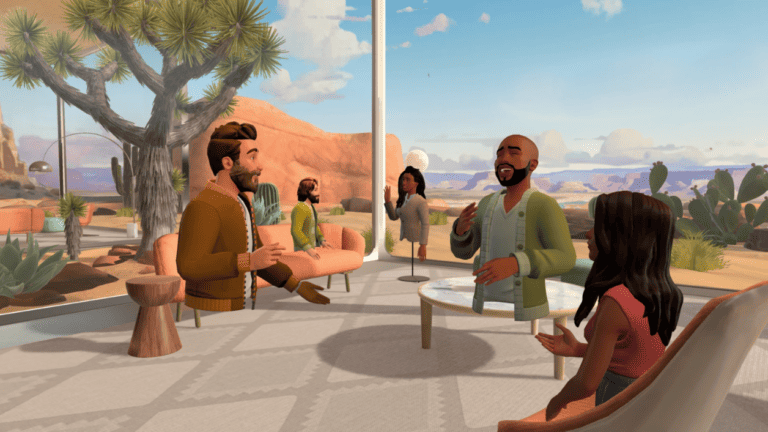Microsoft has released Mesh for Microsoft Teams. This makes it possible to hold meetings with avatars in 3D and VR. Takeda, Accenture, BP and Mercy Ships are already using it.
Like other tech companies, Microsoft has realized that meeting culture has changed since Covid-19. More and more meetings are taking place online, while there is still a desire to physically speak to each other whenever possible. A solution for that might be Microsoft Mesh, which allows Teams users to speak to each other in a 3D environment and in VR.
Mesh is now built into Teams and is available through existing subscriptions to Microsoft’s conferencing solution . Additionally, it has been released for the Meta Quest app store.
Not metaverse, but similar
The integration with Meta is not too surprising: Mark Zuckerberg’s company has been trying to get the “metaverse” off the ground for years. That concept has been demonstrated several times through virtual meetings, where digital avatars represent colleagues and other conversation participants. Microsoft is not copying Meta’s avatars per se, but the idea is similar. A key difference, however, is that a 3D meeting can be participated in even without a VR headset, hugely democratizing the concept. In addition, Microsoft isn’t opting for the terminology of “metaverse,” but speaks simply of “3D immersive spaces”.
Such immersive spaces allow organizations to build their own environments, including for larger events. No programming experience is required to design them. However, custom immersive spaces are hidden behind a Teams Premium license or a trial version for the premium version of Mesh for 6 months.
Experiences of organizations
Pharmaceutical company Takeda was one of the first companies to adopt Mesh. It has already built several specific sites for Mesh to introduce the new solution to colleagues and others. The company sees it as a cost-effective way to give their employees around the world a physical meeting place.
Consulting firm Accenture has also been allowed to test out Mesh for a while. In 2021, they already partnered with Microsoft to develop a digital One Accenture Park to welcome new employees. Energy company BP uses 3D spaces to discuss complex problems that cannot be explained with traditional tools. Mercy Ships, which deploys hospital ships to provide free care in Africa, partnered with Microsoft and Dell Technologies for their solution. Together they constructed what was in essence a digital twin of a ship to show volunteers, staff and potential donors how they operate on site.
Multiple players
While Microsoft Mesh is largely reminiscent of Meta’s projects, it has a unique advantage. Besides the fact that the 3D environments are not tied to VR, the integration with Teams is an interesting one. The reality is that over 320 million users can already potentially choose Mesh to host meetings with.
In addition, the concept of virtual meetings is re-emerging. The Apple Vision Pro, which launches in the U.S. in early February, also allows 3D materials to be shared with each other. Sony is also working with Siemens on an industrial VR solution to also discuss and view three-dimensional concepts. All these have been presented using different terminology (spatial computing, metaverse), but the ambitions are similar. Either way, Microsoft Mesh offers a way for remote workers to interact on Teams in a less distant way than before. The only question is how many organizations will actually end up using it long-term, given that we’ve already become used to the style and repetition of a regular Teams or Zoom meeting.
